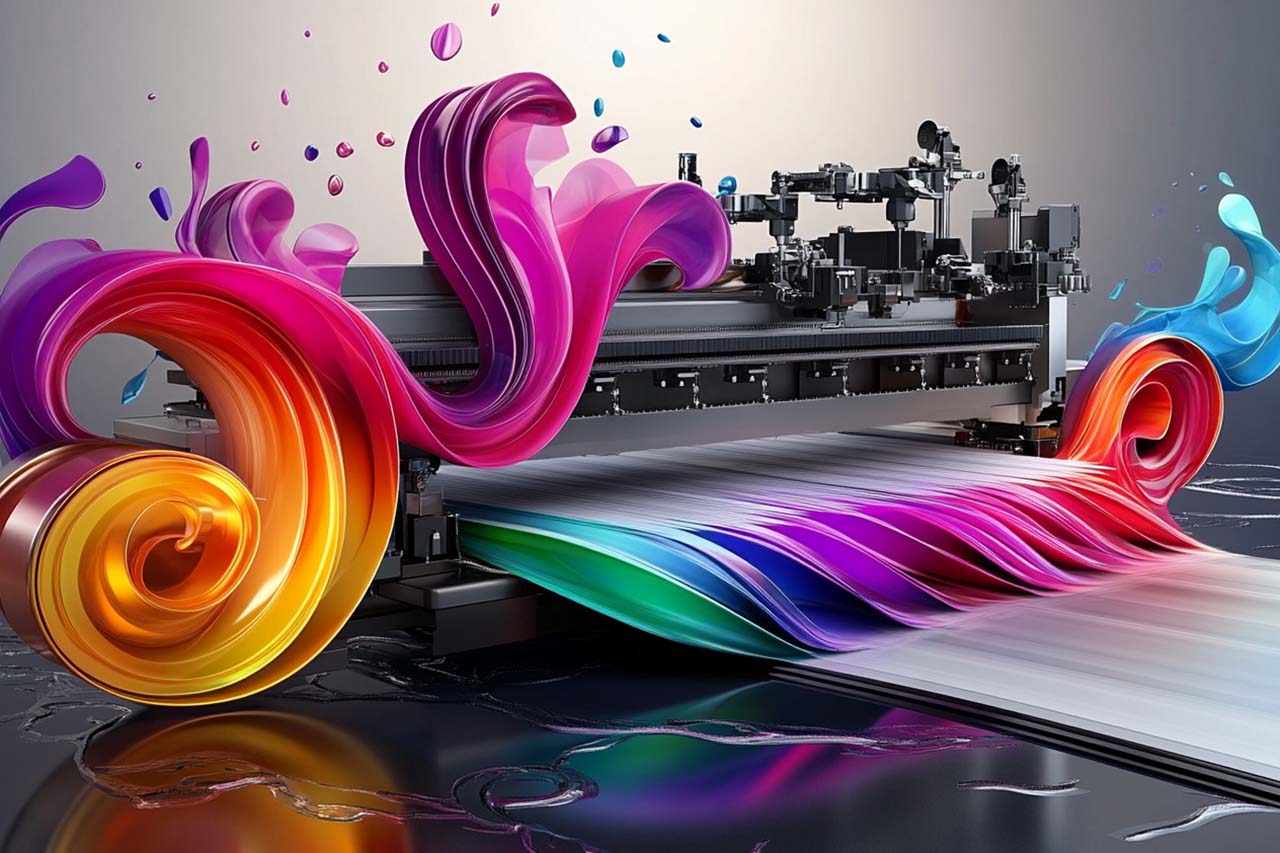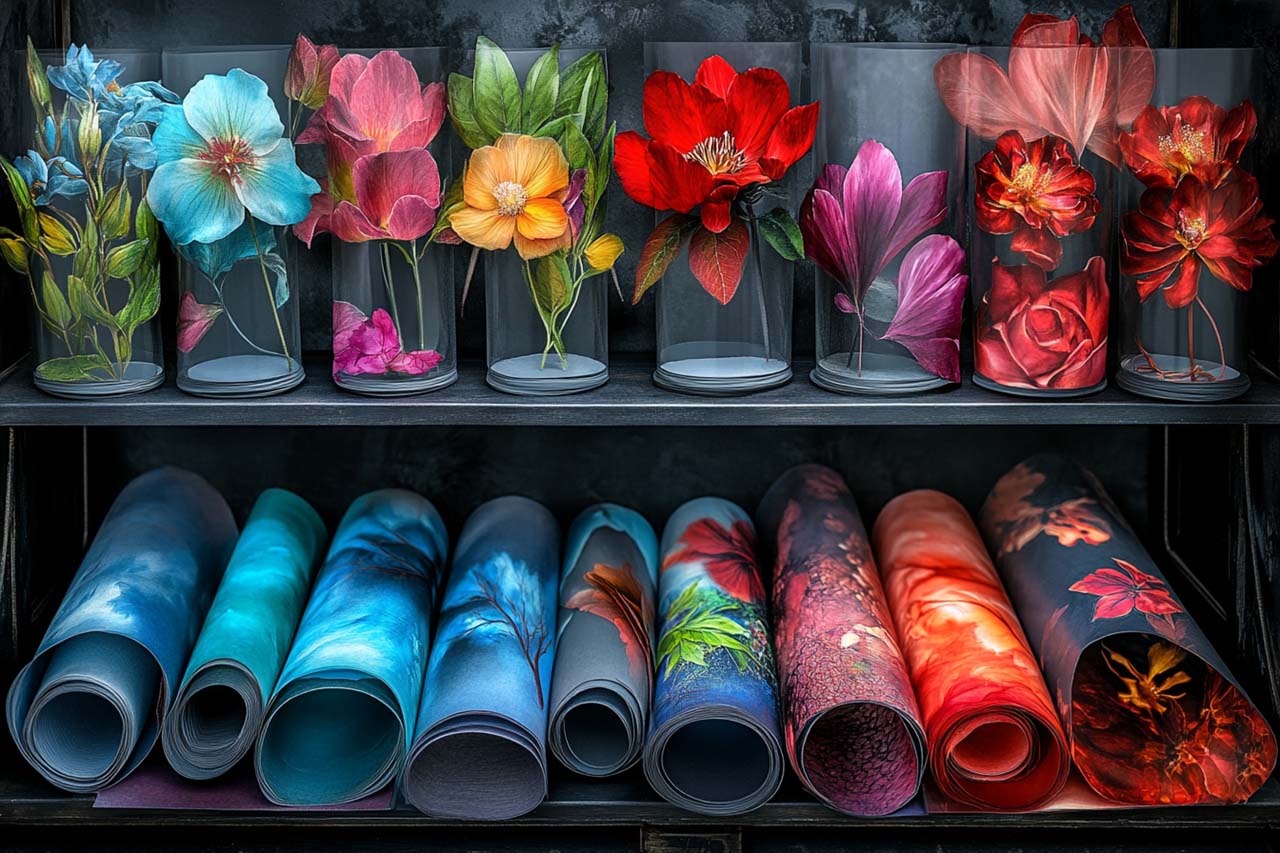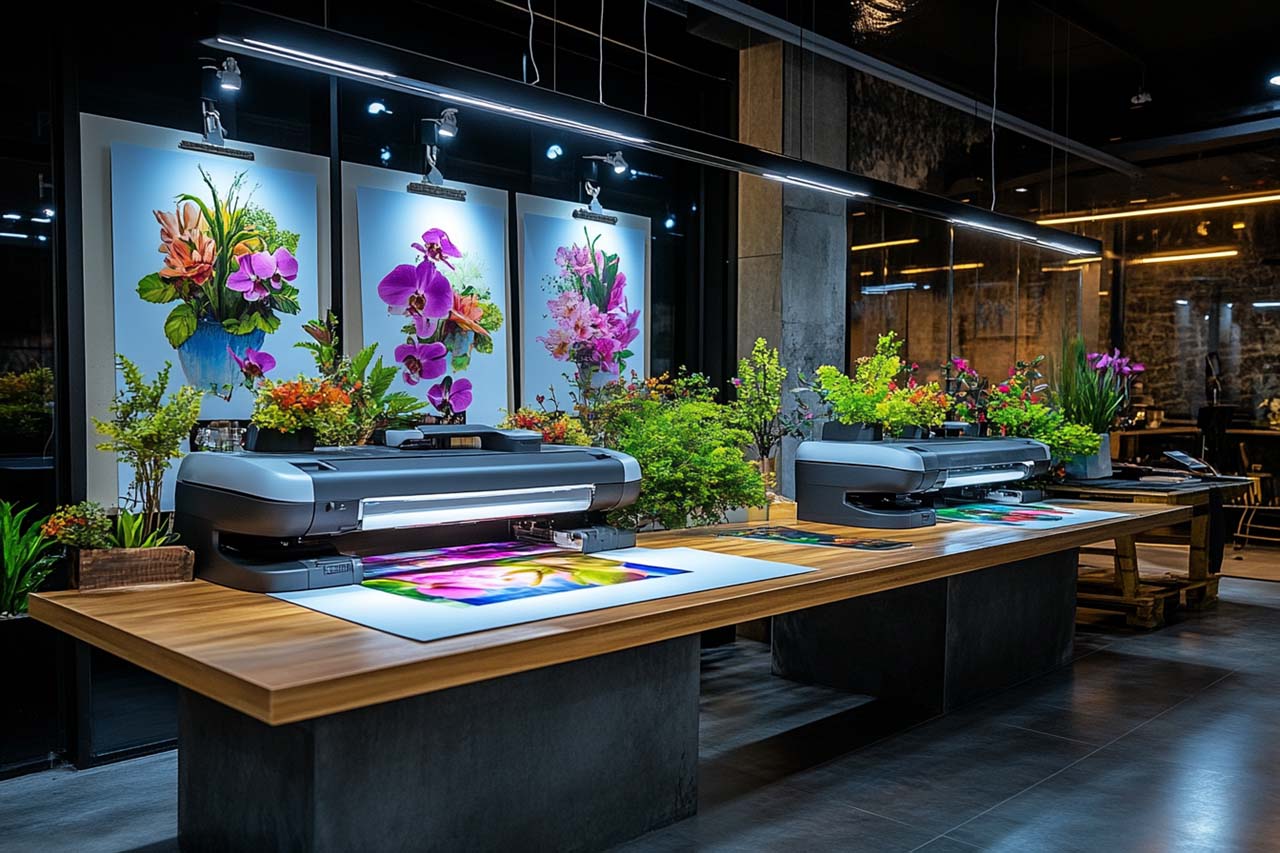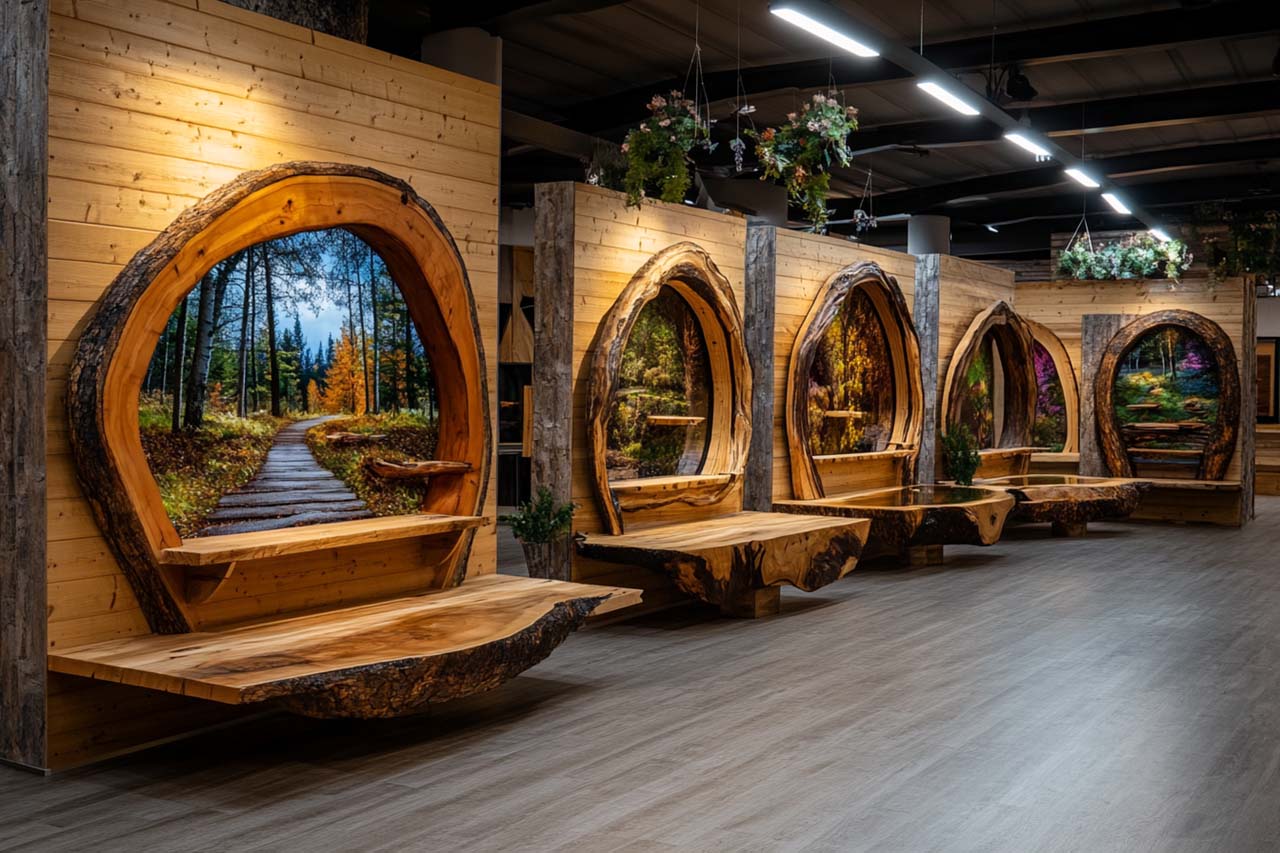Your Step-by-Step Guide
Follow These Simple Steps to Bring Your Digital Art to Life.
1
Choose the Right Printing Method
When it comes to printing your digital artwork, the method you choose will depend on your preferences, budget, and the type of result you’re aiming for. Here are the three most common options to consider:

Local Print Shops
- Why Choose This Option?
Local print shops are a great choice if you want personalized service and the ability to see material samples before committing. Many shops also offer professional advice on the best sizes, finishes, and materials for your artwork. - How to Proceed:
- Locate a trusted print shop in your area.
- Bring your digital file on a USB drive or email it to the shop.
- Discuss options such as canvas, photo paper, or custom framing with the staff.
- Pros:
- Hands-on assistance.
- Immediate access to physical samples.
- Support for custom requests.
- Cons:
- May be pricier than online services.
- Limited operating hours.
Online Printing Services
- Why Choose This Option?
Online services are perfect for convenience and variety. You can upload your file, select your desired material and size, and have the finished product delivered right to your door. - How to Proceed:
- Research reputable online printing services (e.g., Printful, Shutterfly, or local equivalents).
- Upload your digital file and select the material (e.g., canvas, acrylic, or metal).
- Choose your size and any extras like framing or mounting.
- Place your order and wait for delivery.
- Pros:
- Wide range of materials and sizes.
- Delivered directly to you.
- Easy to order from anywhere.
- Cons:
- Can’t preview the final product in person.
- Shipping costs and times may vary.
Home Printers
- Why Choose This Option?
If you already own a high-quality printer, printing at home can be a cost-effective way to create smaller pieces or test prints. This option works best for sizes up to 8.5″x11″ or A4. - How to Proceed:
- Ensure your printer is capable of high-resolution photo printing (300 DPI).
- Use premium-quality photo paper or art paper.
- Adjust your printer settings to match the file’s resolution and color profile.
- Print a test copy to check for quality before printing the final version.
- Pros:
- Immediate results.
- Cost-effective for small projects.
- Full control over the process.
- Cons:
- Limited to smaller sizes.
- Requires a high-quality printer and ink.
Which Option is Best for You?
- For large pieces or gallery-quality results, go with local print shops or online services.
- For quick and budget-friendly prints, consider using a home printer for smaller sizes.
- If you’re unsure, start with a smaller print to test the quality before committing to larger sizes or more expensive materials.
Each method offers unique advantages, so choose the one that aligns with your vision and needs!
2
Select the Material
Choosing the right material to print your artwork on is a crucial step in achieving the desired look and feel. The material you select can dramatically impact the appearance, texture, and overall aesthetic of your final piece. Below are the most popular printing materials and their unique qualities to help you decide:

1. Canvas
- Why Choose Canvas?
Canvas is a top choice for a professional, gallery-style look. It adds depth and texture to your artwork, making it appear more like a traditional painting. - Best For:
- Abstract art.
- Landscapes and nature scenes.
- Statement pieces for large spaces.
- Considerations:
- Choose between matte or glossy finishes depending on the style you prefer.
- Make sure to opt for a stretched canvas if you want it ready to hang without a frame.
2. Photo Paper
- Why Choose Photo Paper?
Photo paper is ideal for achieving vibrant colors and sharp details. It’s perfect for images that rely on clarity and high resolution. - Best For:
- Portraits or family photos.
- Detailed artworks or designs.
- Smaller prints or projects.
- Considerations:
- Use glossy photo paper for vivid, rich colors.
- Opt for matte photo paper for a softer, more understated look.
3. Fine Art Paper
- Why Choose Fine Art Paper?
This material is excellent for a more sophisticated, elegant look. Fine art paper enhances the texture and depth of your artwork, making it feel premium and artistic. - Best For:
- Vintage or classic styles.
- Black-and-white designs.
- Smaller, framed prints.
- Considerations:
- Fine art paper is often more expensive but worth it for high-end results.
- Be sure to check if your printer or service supports this material.
4. Metal Prints
- Why Choose Metal Prints?
Metal prints provide a sleek, modern appearance with high durability. The artwork is printed directly onto an aluminum sheet, creating a glossy, reflective surface. - Best For:
- Modern and minimalistic styles.
- High-contrast or vibrant abstract designs.
- Long-term display in areas with high humidity (like kitchens or bathrooms).
- Considerations:
- Metal prints are generally more expensive than other options.
- They are ready to hang and do not require additional framing.
5. Acrylic Prints
- Why Choose Acrylic Prints?
Acrylic offers a high-gloss finish and makes colors pop. It’s a luxurious choice for a striking, contemporary look. - Best For:
- High-resolution photos and digital artwork.
- Professional office spaces or modern home décor.
- Considerations:
- Acrylic prints are heavier and may require special mounting hardware.
- Ensure the printing service uses UV-resistant acrylic to prevent fading.
Tips for Choosing the Right Material:
- Think about where the artwork will be displayed (home, office, café) and the mood you want to create.
- If you’re unsure, start with canvas or photo paper—they’re versatile and widely loved.
- Always consider the cost versus the impact; some materials, like metal or acrylic, are more expensive but deliver stunning results.
By selecting the right material, you’re one step closer to bringing your digital art to life exactly as you envisioned it!
3
Print Ready Files
Good news! All the files you purchase from my store are already optimized for printing. This means you can skip the preparation step and go straight to printing. Here’s why:

1. High Resolution (300 PPI)
- No Adjustments Needed: Every file is provided at 300 PPI (pixels per inch), ensuring professional-quality prints with sharp details and vibrant colors.
- Ready for Any Size: The files are perfect for printing at the recommended dimensions without losing quality.
2. Aspect Ratio Provided
- Clearly Stated: The aspect ratio of the artwork is included in the product title or description (e.g., 4:3, 16:9).
- What This Means for You: There’s no need to crop, resize, or adjust the file—it’s ready to fit perfectly into your chosen frame or material size.
3. Simplified Process
- Once you download the file, you can immediately upload it to your preferred printing service or take it to a local print shop.
- There’s no need for additional editing, calibration, or file preparation.
Pro Tip for the Best Results:
- While the files are print-ready, double-check that your chosen printing service supports high-resolution JPG files and offers the material and size you prefer.
With these ready-to-print files, bringing your artwork to life has never been easier! Just download, print, and enjoy.
4
Choose the Right Size
Selecting the right size for your print is an important step to ensure your artwork fits perfectly in your space and achieves the desired impact. Here’s how to make the best choice:

1. Check the Recommended Sizes
-
Each artwork in the store comes with a recommended size range, optimized for its resolution and aspect ratio.
-
Popular print sizes include:
- Small: 8″x10″, 12″x16″.
- Medium: 18″x24″, 20″x30″.
- Large: 24″x36″, 30″x40″.
-
Tip: Always choose a size that matches the aspect ratio provided in the product description to avoid cropping or distortion.
2. Consider Your Space
-
Small Sizes: Ideal for creating a gallery wall or adding accents to a bookshelf or desk.
-
Medium Sizes: Perfect for standalone pieces in smaller rooms, like bedrooms or offices.
-
Large Sizes: Best for making a bold statement in living rooms, hallways, or above furniture.
-
Tip: Use painter’s tape or paper cutouts to visualize how different sizes will look on your wall before printing.
3. Think About Framing or Mounting
- If you plan to frame your artwork, ensure the size you choose aligns with standard frame dimensions to save on custom framing costs.
- For stretched canvas prints, the selected size will directly determine the frame depth and overall effect.
4. Test Print Small Before Going Big
- If you’re uncertain about the size or want to see how the artwork looks in your space, consider printing a smaller version first. This way, you can confirm it meets your expectations before committing to a large print.
By choosing the right size, you’ll ensure your digital artwork fits seamlessly into your space, enhancing the overall look and feel of your environment!
5
Consider Framing or Mounting
Once your artwork is printed, the way you frame or mount it can significantly enhance its appearance and impact. Here are some options to consider:

1. Classic Framing
- Why Choose This Option?
Framing adds a polished, finished look to your artwork and protects it from dust and damage. - How to Do It:
- Select a frame that complements the style of your artwork and your room’s décor.
- Choose a frame with a mat board for a professional gallery-style presentation.
- Tip: For modern pieces, consider sleek black or white frames. For vintage or traditional styles, opt for ornate or wooden frames.
2. Stretched Canvas
- Why Choose This Option?
Stretched canvas prints provide a clean, frameless appearance, perfect for a contemporary or gallery look. - How to Do It:
- Ensure the canvas is stretched tightly over a sturdy wooden frame.
- You can choose edge-to-edge printing for a frameless look or add a floating frame for extra elegance.
- Tip: This is a great option for large statement pieces.
3. Floating Frames
- Why Choose This Option?
Floating frames are a trendy way to make your artwork stand out. The print appears to “float” inside the frame, creating depth and sophistication. - How to Do It:
- This works best with canvas or mounted prints.
- Consult with your print shop or framer for available styles and sizes.
4. Frameless Display Options
- Why Choose This Option?
For a minimalist, modern look, skip the frame altogether. Options like metal or acrylic prints work perfectly without additional framing. - How to Do It:
- Prints can be mounted directly on the wall using adhesive strips or clips.
- Use foam boards or backings for extra support.
- Tip: Acrylic or metal prints often include mounting hardware for easy installation.
5. Gallery Walls
- Why Choose This Option?
If you have multiple pieces, a gallery wall creates a striking display and tells a story through your artwork. - How to Do It:
- Arrange the prints in a balanced layout (e.g., symmetrical grid or freestyle cluster).
- Use frames or mix and match frameless styles for variety.
- Tip: Lay out the arrangement on the floor first to perfect the positioning before mounting.
Additional Tips for Display:
- Choose UV-protective glass for framed prints to prevent fading from sunlight.
- Avoid hanging prints in areas with high humidity (e.g., bathrooms) unless you’ve chosen waterproof materials like acrylic or metal.
- Keep prints at eye level for the best viewing experience.
By carefully framing or mounting your artwork, you can elevate its presentation and ensure it becomes the centerpiece of your space!
6
Tips for the Best Results
To ensure your printed artwork looks its absolute best, here are some final tips and tricks to help you achieve a flawless result:

1. Choose a Reputable Printing Service
- Why It Matters:
Not all printers are created equal, and the quality of your final print will heavily depend on the service you use. - What to Look For:
- Positive reviews and recommendations.
- A variety of material options (canvas, photo paper, metal, etc.).
- High-quality printers capable of handling high-resolution files.
- Tip: Ask for a sample print if possible to check the quality before committing to a large order.
2. Confirm the File Format
- Why It Matters:
Ensuring your chosen print shop accepts high-resolution JPG files will save you time and potential issues. - What to Do:
- Before placing an order, verify that your file is compatible with their system.
- Double-check the aspect ratio matches the size you’re ordering.
3. Protect Your Artwork
- Why It Matters:
Proper handling and care will ensure your print stays vibrant and beautiful for years. - What to Do:
- Use UV-protective glass for framed pieces to prevent fading.
- Avoid displaying prints in direct sunlight or areas with high humidity.
- If mounting directly, ensure the material is securely fixed to the wall.
4. Match the Colors to Your Space
- Why It Matters:
Your artwork should complement the existing color scheme of the room. - What to Do:
- Use color samples or previews to ensure the print enhances your space.
- For neutral interiors, bold or vibrant colors can act as a focal point.
5. Experiment with Placement
- Why It Matters:
The right placement can transform how the artwork is perceived. - What to Do:
- Hang larger prints as standalone pieces above furniture like sofas or beds.
- Use smaller prints in clusters for a gallery wall effect.
- Maintain consistency in alignment, such as hanging all pieces at eye level.
6. Handle with Care During Setup
- Why It Matters:
Prints can be delicate, and mishandling can lead to scratches or damage. - What to Do:
- Wear gloves to avoid leaving fingerprints on glossy or delicate surfaces.
- Use clean, dust-free tools when assembling frames or mounting hardware.
Pro Tip:
If you’re unsure about any part of the process, reach out to your print shop or service provider for guidance—they’re often happy to help ensure your project turns out perfectly.
By following these tips, you’ll get professional-quality results that make your digital artwork shine, creating a stunning addition to any room!






0 Comments